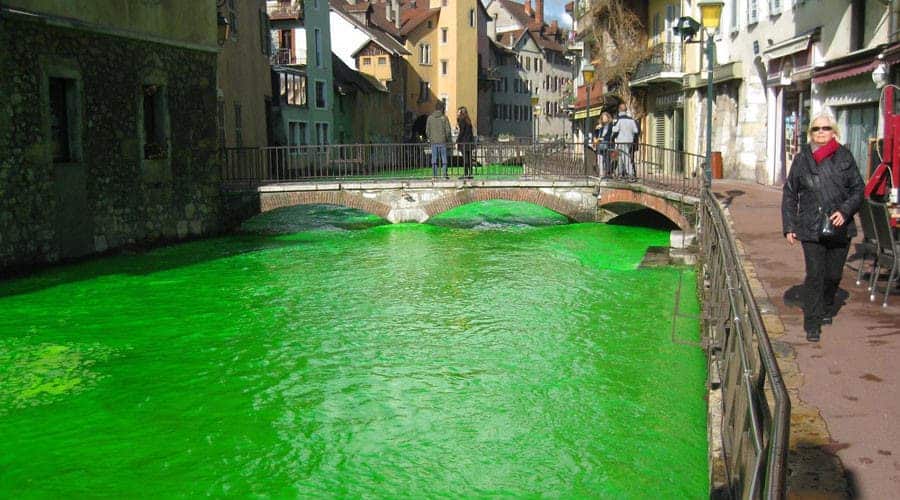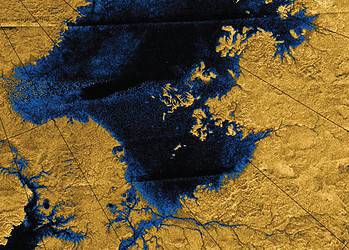It seems like a counterproductive tactic at first – dyeing water to raise awareness about water pollution – but the visual effect was extremely strong, and everything was completely safe, activists say.

It’s not the first time environmentalists use unorthodox methods to promote their causes, but this was one of the most creative and strong campaigns I’ve seen, showing how pollution propagates through water. But is it really safe?
“We used a colorant called fluorescein that’s totally harmless,” said Yannick Pognart, an activist involved in the stunt. “It’s to show the path pollution takes in the water. It’s a strong visual, but it’s completely safe. The fish don’t even notice.”
It’s true that florescein is completely safe. It is widely used as a fluorescent tracer for many applications including microscopy, in some lasers and in forensic studies, but as far as I could find, it was never used in such large quantities. While it certainly didn’t have a strong effect, I doubt the “fish wouldn’t notice” – though the disturbance probably wasn’t significant, especially as the dye washed out fast.
The move highlighted some significant problems France is currently facing. Not only did it show how fast pollution can propagate even from a small spill, but it highlighted the lack of funds for monitoring river health and safety.
“You can’t say ecology is the priority of the country when we see that our resources are down 10 percent,” said French environmental worker Patrick Chopin. “We want to alert the public about the need to preserve and strengthen this public service.”
It’s an eye-catching stunt, but pollution is often invisible or hard to detect. This goes not only for France but for all the countries in the world: rivers are a key element of our lives, and we have to ensure their environmental health – otherwise, we’ll be the ones suffering.






